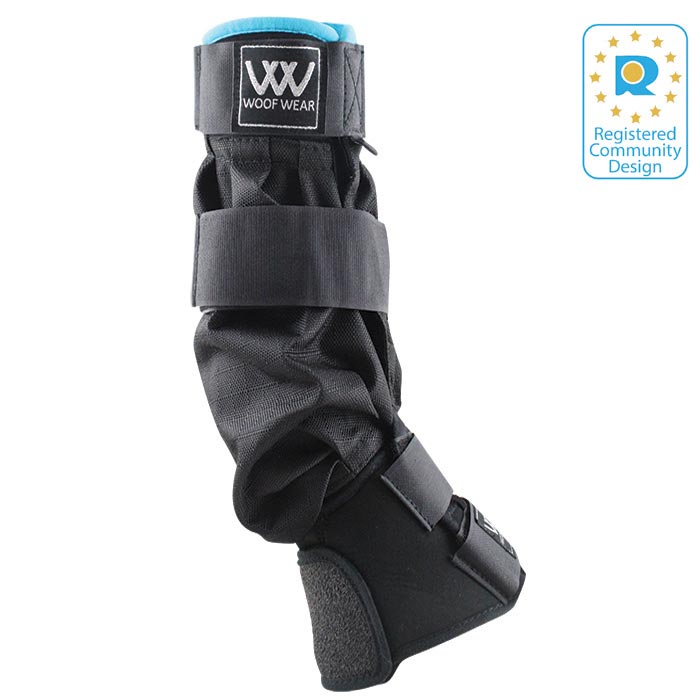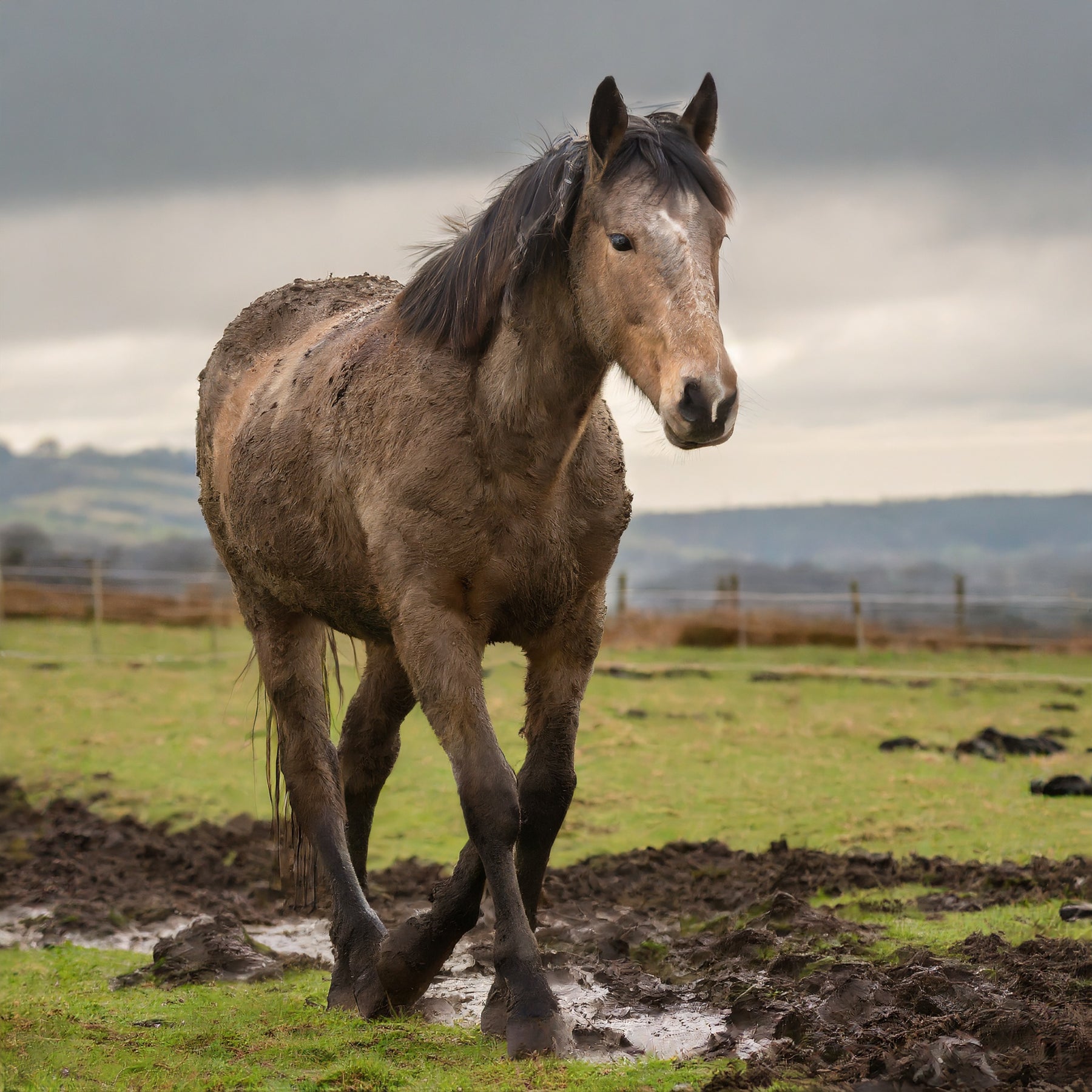Mud fever is a painful skin infection that can affect horses, particularly those with white socks or feathers. This bacterial infection occurs when bacteria, usually Dermatophilus congolensis, penetrate the skin through small cuts or abrasions, causing an inflammatory reaction. Therefore, Mud fever is more prevalent in wet and muddy conditions, where the bacteria can thrive.
Typically, affected areas appear as crusty scabs, areas of matted hair or bald patches, with raw skin underneath
Mud fever manifests as scabs, crusty scabs, swelling, and inflammation in the lower legs of horses. The affected skin can also appear red and sore; in severe cases, it can lead to lameness and secondary infections.
Keeping our horses healthy and comfortable is a top priority for us as horse owners, therefore we need to look at preventative measures.
Prevention is better than cure!
To prevent mud fever, we need to provide a clean and dry environment, avoid muddy paddocks or fields, and groom our horses regularly to remove any dirt or debris that can harbour the bacteria that cause mud fever. We also need to ensure that our horse's legs are dry after exercise or bathing, as damp legs can make them more susceptible to infection.
If our horses do develop mud fever, we need to act promptly to address the condition. This can involve clipping the hair around the affected area, washing the area with an antiseptic solution, and applying a topical ointment or cream to soothe and heal the skin. In severe cases, a vet may need to prescribe antibiotics or corticosteroids to control the infection and reduce inflammation.
How to treat it
Here is a list of steps to help treat mud fever in horses:
- Clip the hair around the affected area to remove any crusts or scabs and allow the skin to breathe.
- Wash the affected area with an antiseptic solution to clean and disinfect the skin. You can use a mild solution of hibiscrub or iodine.
- Dry the affected area thoroughly with a clean towel or cloth.
- Apply a topical ointment or cream to soothe and heal the skin. You can use an antibacterial cream or a cream containing zinc oxide or petroleum jelly.
- Bandage the affected area to protect it from further irritation and to keep the cream in place. Ensure the bandage is not too tight, as this can restrict blood flow to the area.
- Monitor your horse's condition closely and seek veterinary advice if the condition worsens or shows no improvement within a few days.
- If your veterinarian prescribes antibiotics, follow their instructions carefully and complete the full course of treatment, even if the symptoms disappear.
- After the mud fever has cleared up, take steps to prevent it from recurring. This includes keeping your horse clean and dry, avoiding turning them out in muddy conditions, and grooming them regularly to remove any dirt or debris.
Our top picks for mud fever products

WoofWear Mud Fever Boots (available in pairs)
Riders love the way the Woof Wear’s Mud Fever Boot keeps legs clean and dry even in the muddiest conditions.
Features:
-
Top Seal to create a protective barrier just below the knee
-
‘Submarine’ Hoof Capsule dives deep below the heel to prevent mud seeping upwards
-
Waterproof and Breathable fabric creates a cool dry micro-climate to prevent bacterial growth
-
Kevlar® coated heel protector for durability
-
Suitable for front and hind legs
-
Sold in pairs
Muddy Buddy Magic Mud Kure Cream by Lincoln
Fast, effective therapy for mud fever. Scientifically proven to kill the bacteria responsible for mud fever. Use in conjunction with the Lincoln Muddy Buddy Magic Mud Kure Powder. Contains Metalosan 47, a breakthrough in wound management.
Muddy Buddy Scrub by Lincoln
A powerful antibacterial leg wash for easy removal of mud and dirt from the legs of horses. Contains a powerful broad spectrum antibacterial agent to help overcome and combat harmful bacteria present in wet, muddy and dirty environments. Will effectively cleanse, helping to maintain hygienically clean skin.
STAFF TRIED AND TESTED
Seven Day Mud Away by Nettex
Prevents mud, dirt and grime sticking to the coat for up to seven days. Can be used all year round to aid quicker grooming. It can be used on the body, legs, mane and tail and is suitable for all horses and ponies.
Leg Shield Mud Guard by Pettifer
Contains high-quality silicone and antibacterial agents to help protect the legs and lower body from wet and muddy conditions. Invisible in use, Leg Shield helps in the clearing process after exposure to mud.
Pig Oil & Suplhur by Gold Label
An old recipe for the conditioning of the legs and feathers and to aid the prevention of any mud-borne infections. Especially popular with shire horses.
Remember, prevention is key when it comes to mud fever. By taking steps to keep your horse clean and dry, you can minimize their risk of developing this uncomfortable skin condition. As horse owners, we understand the distress and discomfort that mud fever can cause our equine friends. It can be worrying and upsetting, especially when our horses are in pain. That's why we need to work together to prevent and treat mud fever so that our horses can stay healthy, happy, and comfortable.
